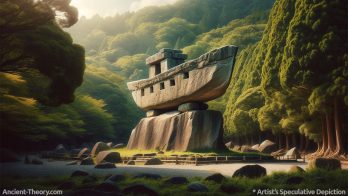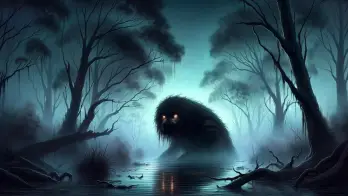The mystifying Manticore is a beast of legend as enigmatic as it is terrifying, stitched into the vast quilt of ancient mythology with threads of horror and wonder. In the article that follows, we shall embark on a thrilling expedition into the shadowy world of this legendary creature. From the dusty scrolls of antiquity to the vivid realms of modern fantasy, the Manticore prowls the boundaries of reality and imagination. So, ready your wits and sharpen your curiosity, as we unravel the secrets of one of mythology’s most ferocious and fantastical denizens. Join us, if you dare, on a journey that promises to be as bizarre as it is enlightening, exploring the Manticore’s ancient origins, its frightful features, and its immortal legacy in the annals of myth and legend.
Origins and Historical Background
The Manticore, whose name is derived from the Persian martichora, meaning “man-eater,” has its earliest mentions in the writings of Ctesias, a Greek physician at the Persian court in the 4th century BCE. Ctesias’ accounts, which were heavily based on Persian oral traditions and the folklore of the region, described the Manticore as a powerful beast residing in India. These descriptions likely served both as an account of foreign wildlife and as a symbol of the exotic and unknown dangers of distant lands. The Manticore would later be assimilated into Greek and Roman mythologies, where it found a place in the natural histories written by scholars like Aristotle and Pliny the Elder, each adding layers to its mythological stature.
Physical Description
According to ancient texts, the Manticore is depicted as having the body of a lion and the head of a human, often with blue or grey eyes, and three rows of razor-sharp teeth like a shark, capable of devouring its prey whole. Its tail, which varied in descriptions from being like that of a scorpion to resembling a dragon’s, was said to be capable of launching poisonous spines that could paralyze or kill from a distance. Some accounts also attribute red fur and a voice that is a mix of pipes and a trumpet to this beast, adding to its otherworldly and terrifying persona.
Behavioral Traits
The Manticore’s reputation as a man-eater is well-documented in both Persian and Greek accounts, highlighting its insatiable appetite for human flesh. It was said to be exceedingly swift, capable of outrunning any prey. Furthermore, ancient lore often emphasized its cunning nature, noting that the Manticore could mimic human speech to deceive and lure its victims. Its solitary nature added to its mystique, painting it as an elusive predator that made its home in the deepest jungles and the most remote deserts, ever ready to strike unwary travelers.
Popularity in Mythology
The Manticore’s presence in medieval bestiaries, where it was illustrated alongside real and fantastical animals, underscores its popularity during the Middle Ages in Europe. These bestiaries were not merely collections but were imbued with Christian morals, often using creatures like the Manticore to symbolize the devil and the embodiment of evil. The Manticore, with its frightful and unnatural composition, was frequently used to convey the message of the chaos and corruption that existed outside the Christian order.
Symbolism
In its core, the Manticore symbolizes the primal fear of the unknown. This beast not only represented the physical dangers of the wild but also metaphorically the spiritual dangers of the untamed and unexplored. Its depiction as a combination of man and beast served to illustrate the blurred line between humanity and animalistic instinct, warning of the ease with which one could descend into barbarism. Additionally, the Manticore’s ability to mimic human voices was seen as a symbol of deceptive appearances and the hidden dangers in seemingly familiar things.
The Manticore in Popular Culture
Today, the Manticore continues to captivate the imagination, appearing across various media. Its features are prominently showcased in fantasy novels, films, and television series, often as a creature that characters must overcome to achieve their quest. In role-playing games, such as Dungeons & Dragons, the Manticore is a formidable foe that challenges players with its deadly spines and ferocious attacks. The creature also appears in modern literature, such as in The Chronicles of Narnia, where it adds to the rich tapestry of C.S. Lewis’s world. More recently, the 2022 album release from rock due Shovels & Rope is named Manticore, and provides a wonderfully artistic depiction of the mythological beast on its cover.
Longevity and Legacy
The enduring fascination with the Manticore reflects a broader cultural and psychological engagement with mythological creatures. Its evolution from a creature of Persian folklore to a mainstay in global popular culture exemplifies how myths adapt over time, reflecting changing cultural contexts and continuing to serve as a means for humanity to express and explore its deepest fears and fantasies. The Manticore’s continued relevance in storytelling and media underscores our collective need to personify and confront the wild and the unknown.
Wrap-Up
From ancient Persian legends to modern pop culture, the Manticore remains one of the most intriguing and sinister mythical creatures. By exploring the multifaceted aspects of the Manticore myth, we not only indulge in fantastical tales but also gain insight into the human psyche and its perennial confrontation with the unknown. As such, the Manticore serves as a powerful symbol of the monstrous, the mysterious, and the mortal blend of fear and curiosity that defines human interaction with the mythological.
At Ancient Theory we only use trusted sources to document our articles. Such relevant sources include authentic documents, newspaper and magazine articles, established authors, or reputable websites.






